Last Updated on November 12, 2025 by Emma Fajcz | Published: September 15, 2020
Here’s our foolproof guide to ordering paella and other scrumptious Spanish rice dishes.
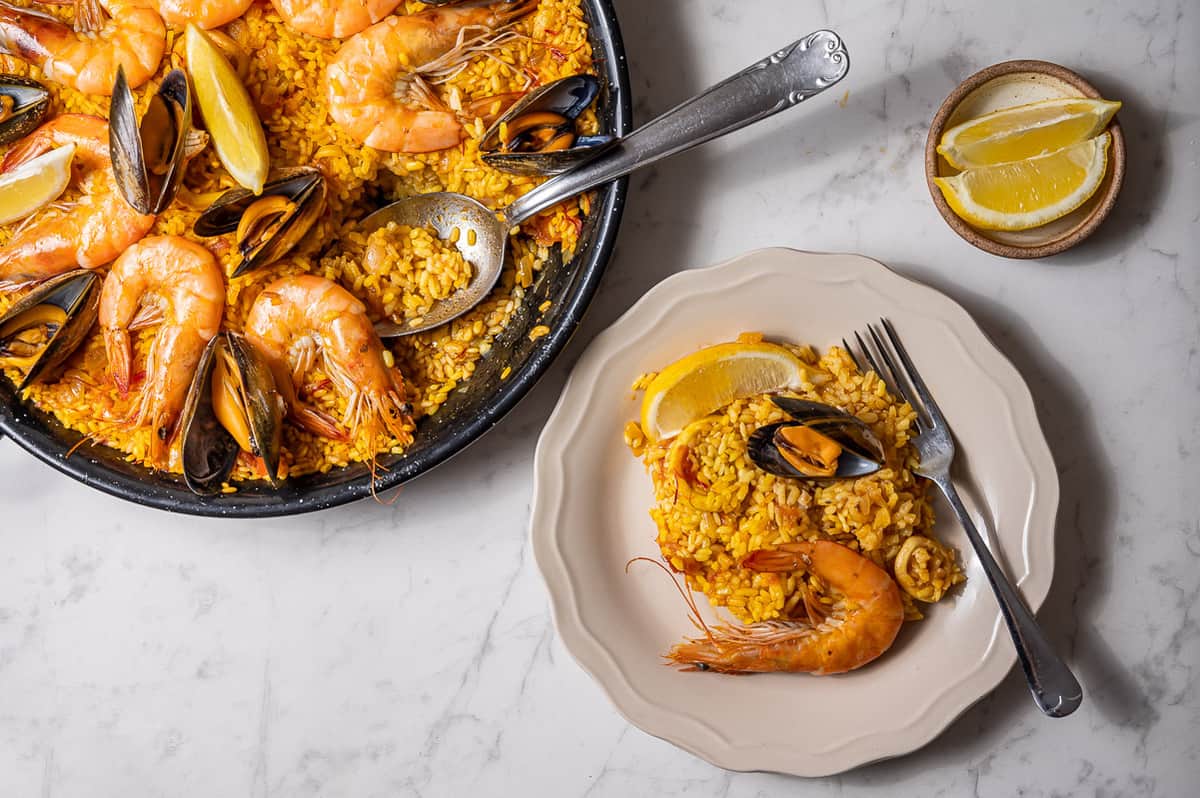
What's Included
Types of Spanish rice dishes
With the exception of the eastern region of Valencia (the birthplace of paella), what the rest of the world calls “paella” goes by many different names here in Spain. In fact, outside of Valencia, the dishes that are not called paella are often even more delicious!
Paella
Purists will tell you that the only dish that should ever be called paella is the traditional recipe for paella valenciana. But the roots of this now iconic Spanish rice dish are not what you might imagine!
True Valencian paella has no seafood and is only about two centimeters (less than an inch) deep in the pan. It originated as a hearty lunch for workers in the fields far from the coast.
The traditional recipe calls for rabbit, snails, and large green beans and is cooked over an open fire in a thin, round pan known as a paella. That’s right: the name for Spain’s most famous rice dish actually comes from the pan it is cooked in!
To avoid confusion, many Spaniards now refer to the pan as a paellera while using the word “paella” to refer to the food.
Today, you can find many delicious variations of paella, including the famous seafood version, paella mixta (a sort of surf-and-turf), as well as vegetarian paella.
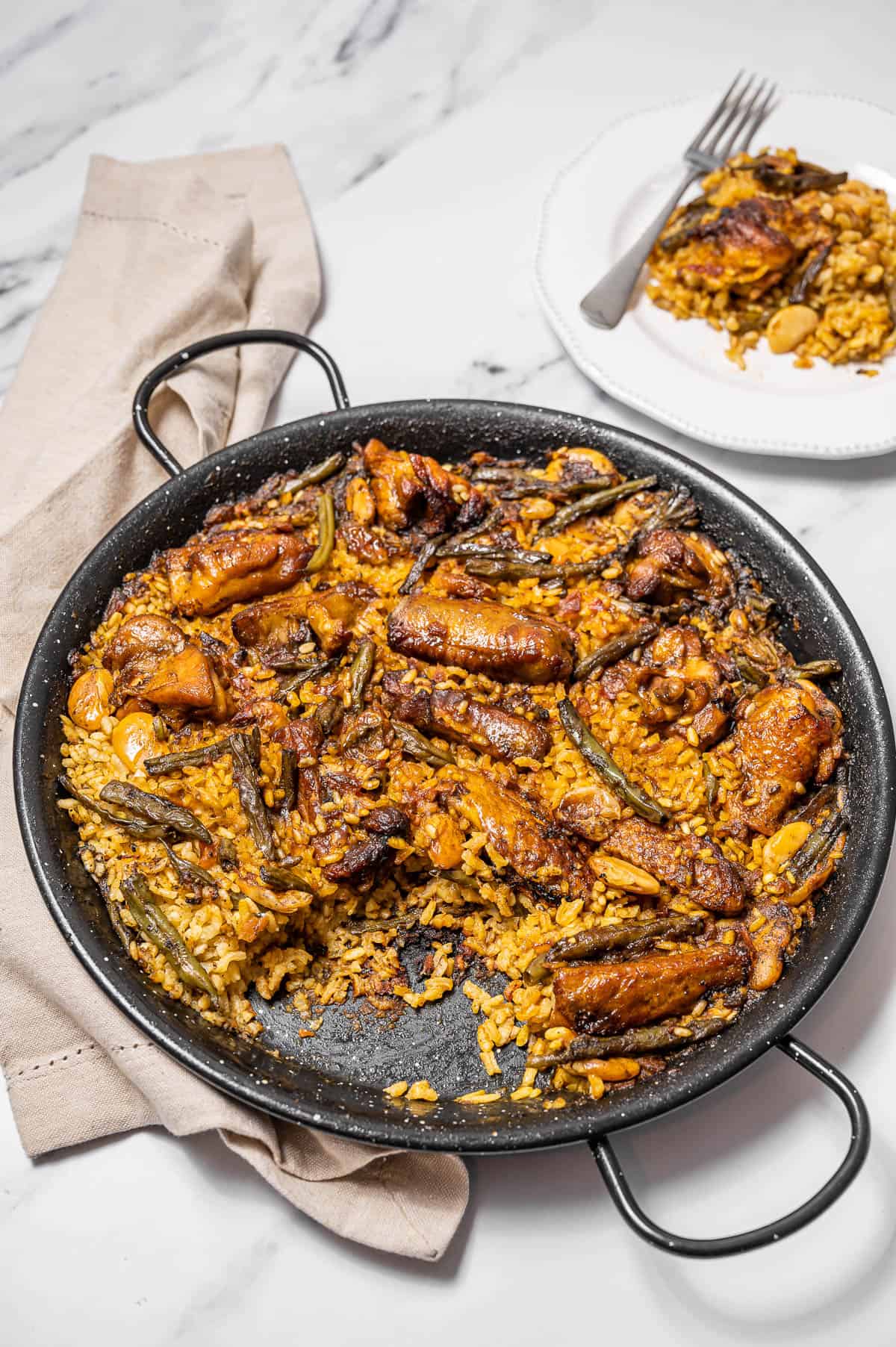
Arroz al caldero
The thing about paella is that the rice soaks up all the cooking liquid, so the end result isn’t very moist. But if you’re craving a Spanish rice dish so juicy that it’s almost creamy, look for arroz al caldero.
This rice dish is prepared in a deep, black, cauldron-like pan and hails from Murcia, the region just south of Valencia along the Mediterranean coast. And where paella is all about the crisp crust on the bottom of the pan, arroz al caldero puts its money on intense flavors and luxuriously creamy textures.
The secret to a spectacular arroz al caldero is all in the broth, which often contains up to 15 different types of fish, and the smoky ñora peppers that are native to Murcia.
Traditional preparation of Murcian arroz al caldero.
Arroz con bogavante (or anything else!)
Outside of Valencia, most menus will refer to rice dishes as just that: arroz. Most are still cooked using the exact same paella pan, but because the ingredients and the region are different, it’s not called a paella. Instead, it’s “rice with…” whichever main ingredient they’ve chosen to add.
Perhaps the most prestigious ingredient is bogavante, or lobster. A well-made arroz con bogavante is a flavor-packed thing of dreams. Other popular ingredients are scallops, shrimp, chicken, and fish.
Arroz caldoso
This style of rice will have you debating whether to grab a fork or a spoon!
Arroz caldoso literally means “brothy rice.” This style of Spanish rice dish is popular throughout the Iberian Peninsula (Portugal included!) and has hundreds of variations, from seafood to vegetables to chicken.
Step aside, paella—Galicia’s underrated rice dishes like arroz caldoso deserve some love, too!
Arroz Negro
With its inky black color, this style of rice lives up to its name.
Arroz negro, or black rice, gets its jet black color from squid ink. It usually contains calamari and other seafood hidden in the inky goodness. And don’t forget to ask for bright white alioli sauce, a garlicky mayonnaise, to go with it.
Words to know
When it comes to ordering Spanish rice—or making it at home—there are a few words you’ll want to know. Here are few terms that might come up that you probably didn’t learn in your Spanish class at school.
Socarrat
Perhaps the most important word when talking about paella! Socarrat is the crispy, almost burnt layer along the bottom of the paella pan. Only the best paella chefs know how to create socarrat without burning the rice, making it a surefire sign of a great paella.
Paellera
The large, shallow, round pan used to make paella and many other Spanish rice dishes.
Azafrán
Saffron. As the key ingredient in paella, saffron famously gives the dish its characteristic yellow color.
Fun fact: while it is commonly used in Spanish cooking, saffron is one of the most expensive spices in the world. Many Spaniards substitute it for a yellow food coloring to cut down on the cost of making paella.
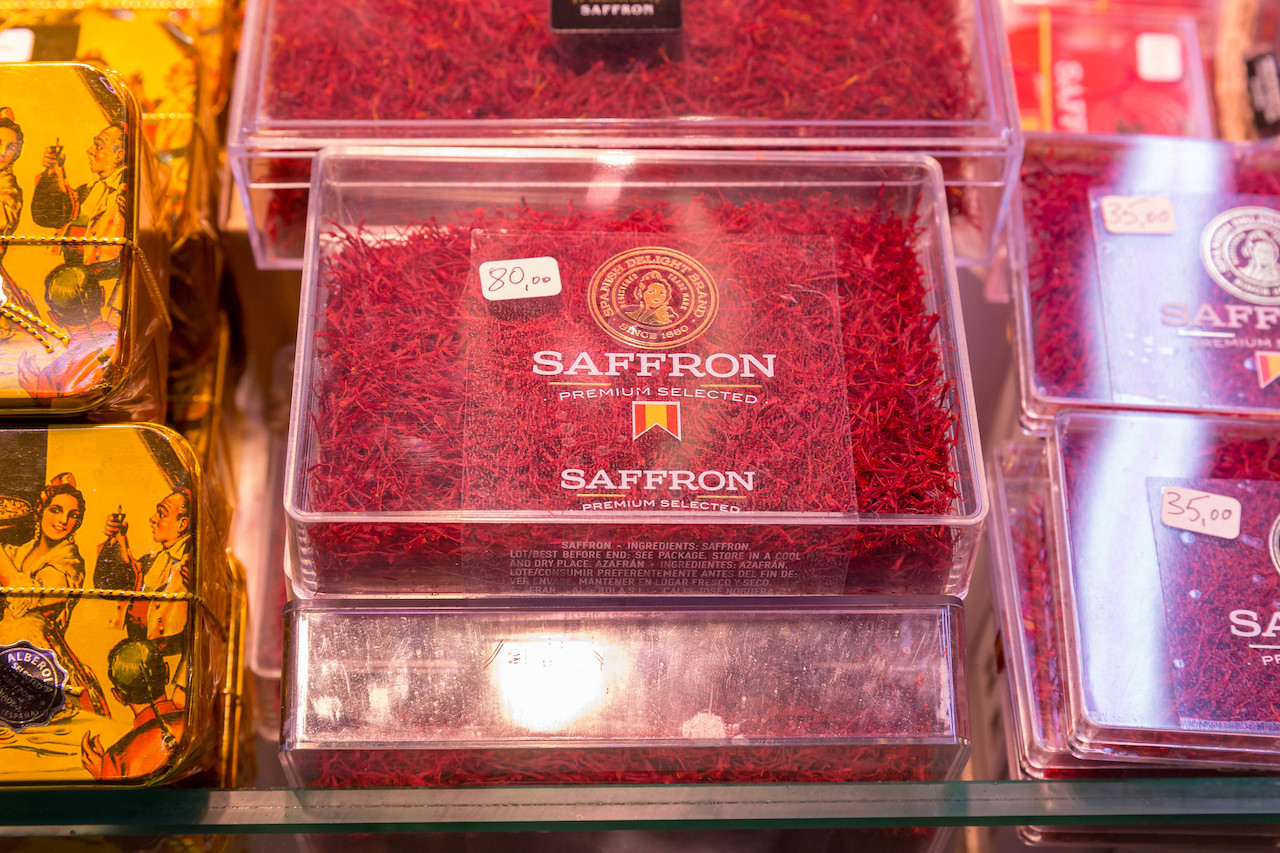
Caldero
A deep, cauldron-like pan used to make the creamy Murcian-style of rice known as arroz al caldero.
Garrofón
A unique style of large, flat, green beans used in a traditional paella valenciana. You can find these unique beans almost exclusively along Spain’s easternmost provinces in the region known as Levante. If you’re not in eastern Spain, butter beans are an acceptable substitute.
Ñora pepper
The secret to spectacular arroz al caldero. These dried, round peppers are an essential part of the broth and bring a richness and deepness of flavor to the rice. Most chefs use about three ñora peppers per person in their recipes.
Arroz bomba
The most popular type of rice used in dry Spanish rice dishes like paella or arroz al caldero. This variety of rice has a lower starch content which means each grain stays intact and doesn’t fall apart, which is how paella maintains such a unique texture.
The best Spanish rice recipes
Can’t make it to Spain right now? Here are a few tried-and-true recipes that will help you bring the best Spanish rice dishes to life in your own kitchen.
Traditional Spanish paella recipe
Let’s start off with a classic. This traditional Spanish paella recipe follows the Valencian standards, but uses ingredients that are more easily accessible for most home cooks outside of Valencia.
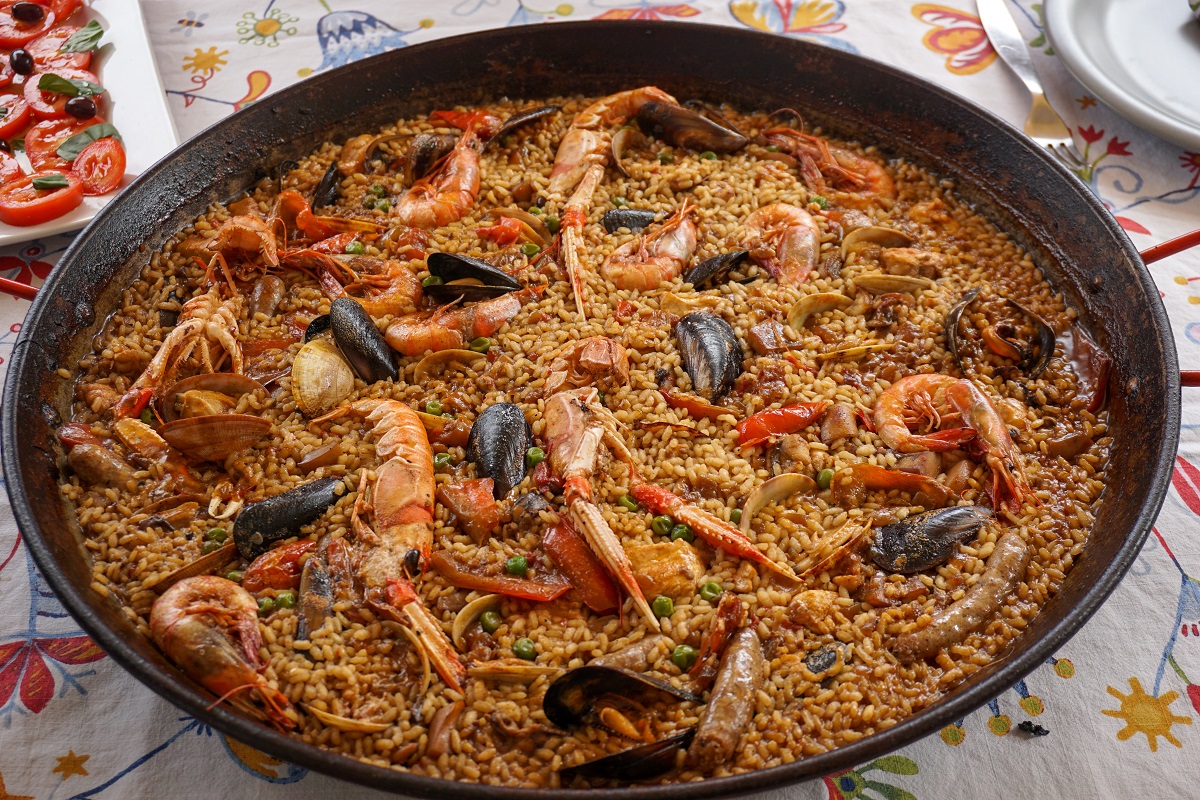
Seafood paella recipe
While traditional paella valenciana has its roots in the inland parts of Valencia, the region also has hundreds of miles of stunning Mediterranean coastline. So it’s no surprise that locals soon began adding fresh fish and shellfish to their paella!
Seafood paella is the best-known version of the dish outside Spain. Try it for yourself at home with this delicious seafood paella recipe.
Murcian-style vegetarian paella recipe
Murcia’s prime location right on southeastern Spain’s Mediterranean coast gives it plenty of sunshine. As a result, it’s home to some of the best fresh produce in Spain.
Delicious local vegetables are the star of the show in this vegetarian paella. It’s also easily adaptable to whatever produce you have on hand!
Arroz al horno (baked Spanish rice) recipe
The earliest versions of paella were cooked in large pans over an open fire outdoors. But oven-baked Spanish rice dishes are worth a try as well. This arroz al horno recipe with garbanzos and dates is completely vegan and the definition of comfort food.
Where to find the best Spanish rice dishes around Spain
Paella and other Spanish rice dishes are not part of traditional madrileño or catalan cuisine. But that doesn’t mean you can’t find amazing Spanish rice dishes outside of Valencia!
Best rice dishes in Barcelona
With local seafood and plenty of beach-side restaurants, Barcelona has more in common with Valencia than you might expect! Here’s where you can find authentic paella in Barcelona.
Best rice dishes in Madrid
The great thing about the Spanish capital is that you can find authentic versions of just about every regional cuisine in Spain. Seek out restaurants owned and operated by families from Spain’s coastal regions, and you’re guaranteed to have a memorable meal. Here are our top picks for paella in Madrid.
Best rice dishes in Seville
It can be harder to find top-notch palle in Seville, but amazing options do exist. Need some help getting started? Here are a few of our favorite paella spots in Seville.
Best rice dishes in San Sebastian
San Sebastian is a foodie’s dream – and that’s also true when it comes to rice dishes! Here’s where you can find the best rice dishes in the city.
Best rice dishes in Valencia
You didn’t think we’d forget about Valencia, did you? When visiting this city, you can’t miss out on having true Valencian paella at a traditional restaurant.
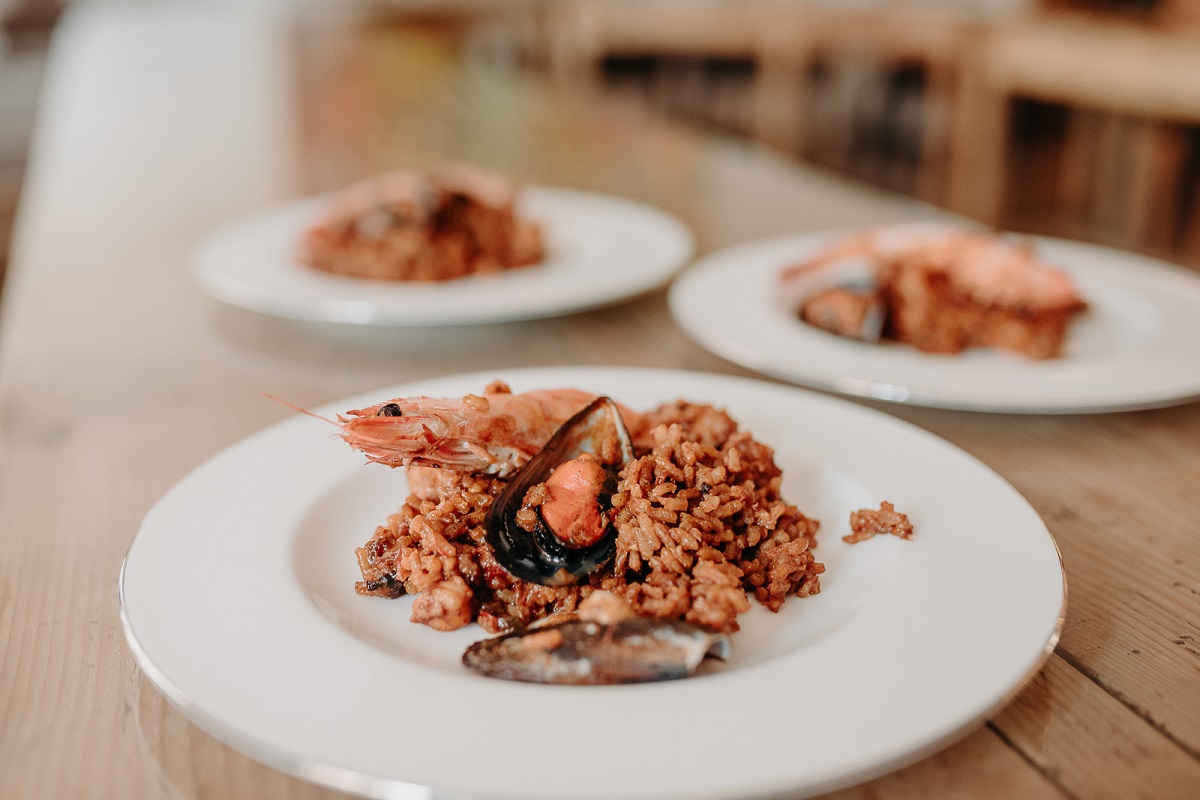









Please tell me where in Madrid we can get Paella with Socorrat?
Lots of flavoursome rise but none can we find with Socorrat
You should be able to at Casa de Valencia– ask for it there!
Nicely written Amy. Indeed there are a lot of delicious Spanish rice dishes, besides authentic Paella Valenciana.
It’s a shame that you see “Arroz con Cosas” all around the internet. People better take a closer look at the real authentic rice dishes instead of messing them up with things like chorizo and long grain rice..
Thanks so much for reading, Jeroen! There’s definitely a fine line between a good Spanish rice dish and “arroz con cosas”!
Nice guide for beginners! Do note that it’s spelled “socarrat”, which literally means “burnt” in Valenciá. (I was born and raised in Alicante, which really is the number 1 area for Arroz, slightly above Valencia. Granted I may be biased, but Alicante and Valencia are definitely top two regions 😀 )
Thanks for reading, Steven (and for catching that typo)! There’s definitely no better place for rice in Spain than Comunitat Valenciana!
I tried the seafood paella and totally loved it! I have a similar seafood pasta recipe on my blog if you want to hop by! Anyway keep up the good work!
Glad you enjoyed! Thanks for reading, Karine!